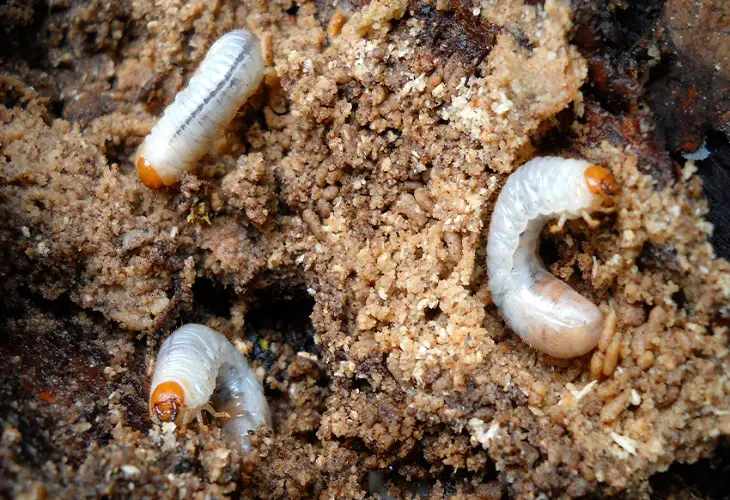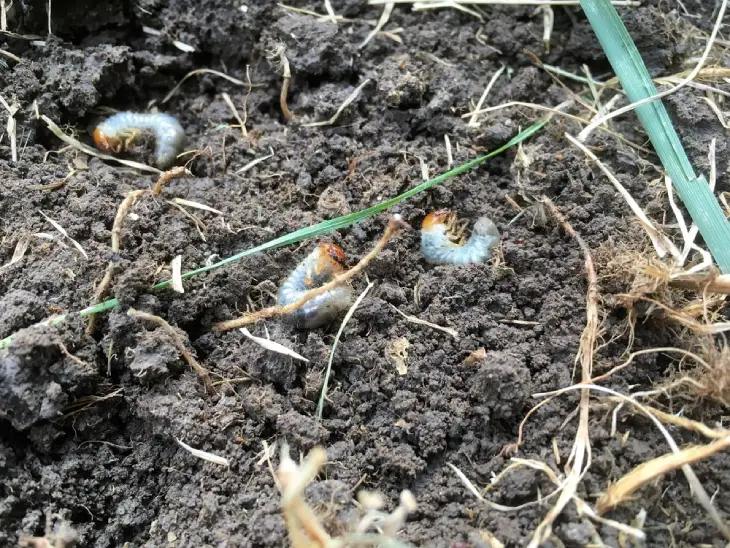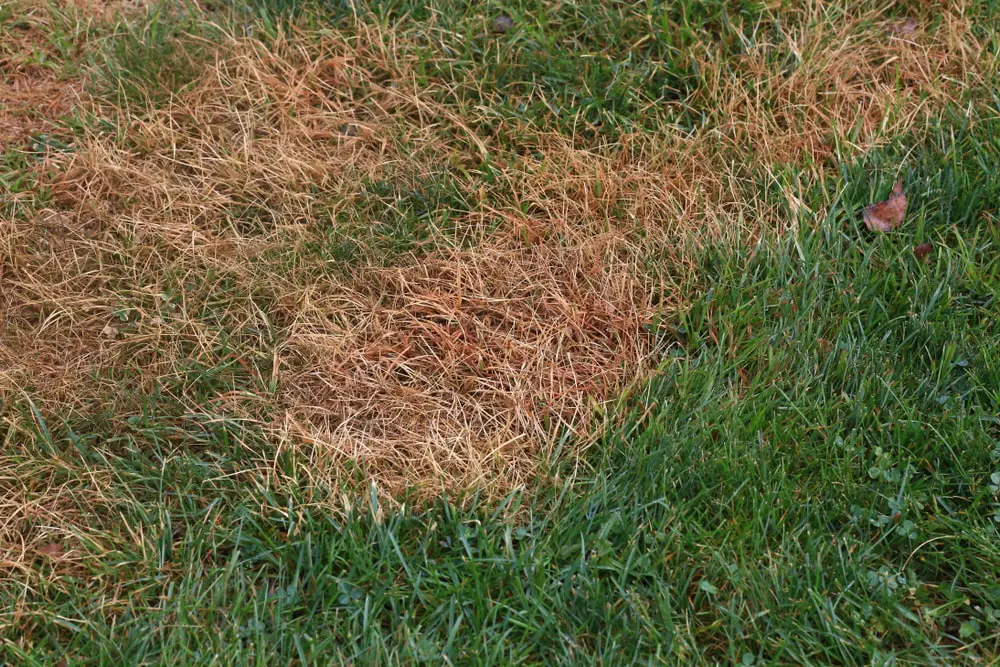Identifying Lawn Grub Damage and How to Treat for Them

If your lawn looks dry and thin, with several brown patches, it may not be due to a lack of water or nutrients. Your lawn may be under attack from something below the surface.
Small concentrations of grubs can be found in nearly every lawn in Canada. However, lawn grub damage may become evident until their numbers increase to a critical point. In addition, their presence also attracts larger critters, who consider these larvae a tasty treat, which can damage your lawn even more. Our experts will explain what a grub is and how to keep them from ruining your beautiful lawn.
Table of Contents:
- What Are Lawn Grubs?
- Signs of Lawn Grubs
- How to Know If You Have Grubs in Your Lawn
- How to Get Rid of Lawn Grubs
- When to Treat Your Lawn for Lawn Grubs
What Are Lawn Grubs?

The word "grub" is used to describe the larvae of various species of beetles. During the winter, their eggs lie dormant in the soil and hatch in the spring when the ground thaws. Lawn grubs feast on plant roots. Once they become adults, they lay more eggs, perpetuating the cycle for the next generation.
Lawn grubs are small and usually off-white in colour with a darker head. They live under the soil, but once exposed, they tend to curl up into a "C" shape. Typically, they’re between one to three centimeters in length, depending on the species of insect.
Signs of Lawn Grubs

It’s common for homeowners to mistake grub damage for other lawn issues. But if you know what to look for, you can save time and money by getting rid of grubs and regaining control of your lawn. Here are some signs that your lawn is under attack form grubs:
Increased Animal Activity
Lawn grubs are a favorite source of nourishment for birds, moles, raccoons, skunks, and other small animals. You may have grubs if you notice increased animal activity on your lawn during the early morning or evening hours or see signs of digging. These critters are likely targeting your lawn for the free meal(s). And once word gets out that delicious, nutritious grubs are on the menu, the activity will increase. While birds poking a few holes in your lawn may not create much of an issue, animals like moles and raccoons can quickly destroy your lawn to get at these yummy treats.
Spongy Texture
Grubs feast on roots, which can cause your lawn to have a spongy texture and feel when walking across it. This is caused by the deterioration of the root system, which means there’s nothing left to anchor the grass to the soil. In this case, you can roll back the spongy patches of sod like a carpet to expose the grubs beneath.
Lawn Discolouration
Once the roots of your lawn are damaged, the grass will turn yellow and die, resulting in irregularly-shaped brown patches throughout your lawn. Many homeowners attribute this discolouration to a lack of water or some type of fungal disease.
How to Know If You Have Grubs in Your Lawn
Determining if lawn damage is from grubs can be tricky. To definitively test for grubs, wait until after a heavy rain and dig up approximately a 30 cm patch of your lawn where the grass has turned brown to expose the soil beneath. Your property will benefit from a treatment plan if more than five grubs are within the patch.
Learn More About: How to Revive Dead Grass
How to Get Rid of Lawn Grubs

There are a few ways to treat lawn grubs. Depending on your preference, you could choose a natural treatment option, such as nematodes, or a chemical treatment, such as pesticides. Here is a little more about what each option involves.
Nematodes Treatment
Nematodes are a natural treatment option for those who wish to avoid using chemicals. These microscopic worms are released into the soil and make their way into the bodies of the grubs.
Once there, they release infectious bacteria, which multiply and eventually prove fatal to the host. Nematodes are applied to the lawn in liquid form and may take several years to become established.
Pesticide Treatment
If you find five or more grubs when doing the quick test outlined above, apply appropriate treatment according to the label directions. Then, water the treatment thoroughly (one to three centimeters of irrigation) to move pesticides down to the root zone where the grub feeds.
Properly dispose of any pesticide containers according to label directions. And never pour leftover pesticide down drains or storm sewers.
When to Treat Your Lawn for Lawn Grubs
When to apply lawn grub treatment, such as pesticides, depends on where you live, as the temperature can affect grub activity and treatment effectiveness. For the most accurate recommendation on pesticide application, follow the manufacturer's instructions and if needed, seek professional advice.
Take Back Your Lawn with Help from The Grounds Guys®
Maintaining a beautiful lawn in Canada is not easy, especially when you have hungry grubs undermining all your hard work. For expert advice on pest control for lawns, contact The Grounds Guys to request a free estimate. Our team of experienced pros have the right equipment and training to keep your lawn healthy and beautiful throughout the season.
 Click to call
Click to call


